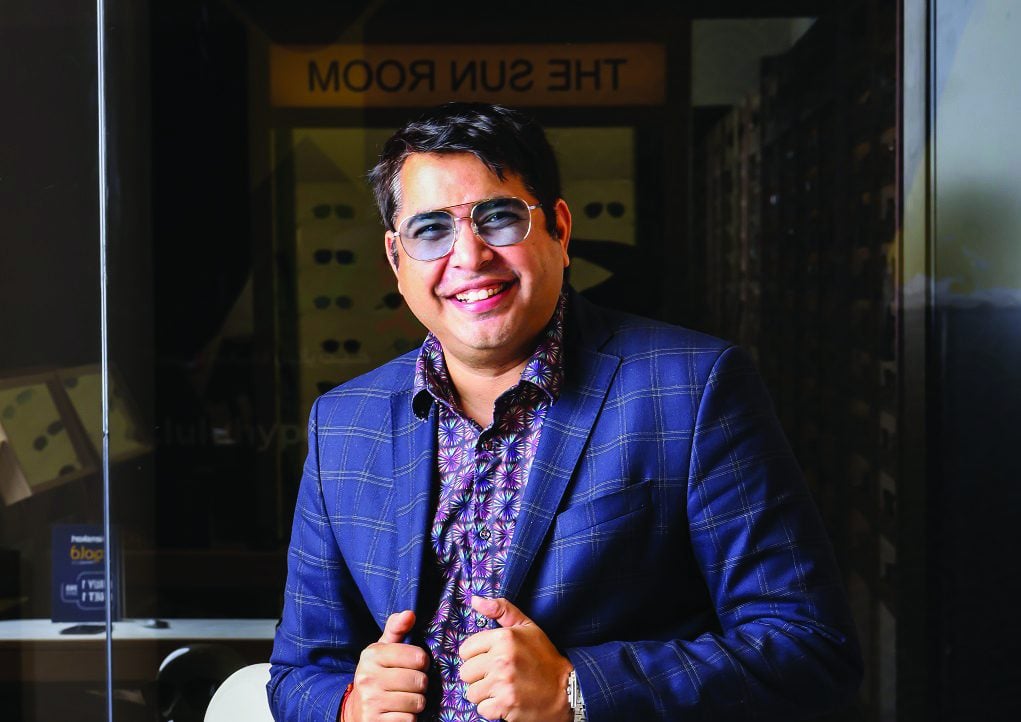
‘Omnichannel’ is the buzzword of the day in retail, usurping the awkward ‘phygital’ and elevating the aged ‘multichannel’. There are others too, but the meaning is always the same. Yet, such is the way companies throw these terms around without a proper understanding of their meaning, it is becoming a bit of a running joke within the industry. A catch-all term that does not really catch all – an omni-term, if you will.
For us at Lenskart, the way we have defined omnichannel means there is no standard map of the buying journey, which runs from awareness to consideration to trial to purchase. These can happen on and across different mediums. In our case, that means digital, retail or, at times, through assisted sales or customer service through WhatsApp. It is a real multichannel approach using various channels to ensure the buying journey rolls on.
Lenskart statistics: More than 70 per cent of our in-store customers check our online platforms first and, from there, interact with another touchpoint – be it a WhatsApp channel or customer care channel – and ultimately the transaction happens at the store. To take things one step further, at the store we have multiple touchpoints, such as AI and AR in the form of our 3D try-on. At the store, the consumer can try out virtually and decide on the best-fitting frame. They come to the store, try on their choice of frames and, if they like them, they can purchase online while being at the store. It is online to offline, while also being offline to online. During the buying journey, it is not just how many transactions happen online vs offline, but also about where in the customer journey these interactions happen.
We found this model works because consumers invariably want to touch and feel the product, while still wanting to have that feeling of it being a digital purchase.
Case Study: Lenskart’s project on Ain Dubai
We recently had Lenskart projected on to the Ain Dubai. We had a production team who used drones to capture the LK brand logo and messages on the big wheel for a truly stunning sight. We shot this animation from high in the sky with a curious crowd below. Once this promotional film was produced, we partnered with numerous influencers – our own co-founder and CEO Peyush Bansal is a major influencer with a huge fan base across India – to post simultaneously at 11am on October 7. More than 100 people posted this across all channels, and within a short frame of time we noticed the video went viral with more than 200,000 views. We also played these videos at our stores, generating an increase in footfall. During the following weekend, we saw an increase of almost 50 per cent, along with sales also doubling week-on-week.
This is omnichannel at its heart and core as it was an offline campaign that moved online, brought footfall – offline – yet the actual sales still ultimately often occurred online. The world is still coming to terms with this; people still think of shopping as ‘online’ or ‘offline’. They only think about the last point in the funnel, when in reality the entire funnel needs to be considered.
What are the metrics to really look at:
Online traffic to offline footfall
Offline footfall to online traffic
Assisted sales
Conversion online vs conversion offline
What is the overflow?
Fundamentally, at the heart of omnichannel, consumers today have a hybrid existence. They cannot be forced to buy in a certain way. Sometimes they are happier buying online; sometimes offline, on the telephone, or on WhatsApp. The objective is to make it frictionless, and that is what Omnichannel really does. We create a true frictionless experience, which is the heart and core of Lenskart’s omnichannel strategy. This is across all our eight stores, our website, mobile app, mobile web, across all platforms, and soon all of this will also be transferred to the metaverse. This is omnichannel – plus the metaverse – and this is the way forward.
Our competitors have tried the ‘phygital’ approach – to go into a retail store and purchase online on a monitor. For me, this does not make sense because the objective of coming into a retail store is to have this touch-and-feel experience, to communicate with human beings. For me, that simply does not hold true at a retail store involving a monitor.
However, whichever way omnichannel and ‘phygital’ goes, along with the metaverse coming into play, one thing to be assured of is that there is a lot more to keep retail digital and data pundits busy. It is evident that omnichannel is heading in two distinct directions; first, it is far more consumer-centric, and second, it facilitates faster decision-making. And, as the old adage goes, ‘We continue to live in interesting times.’









